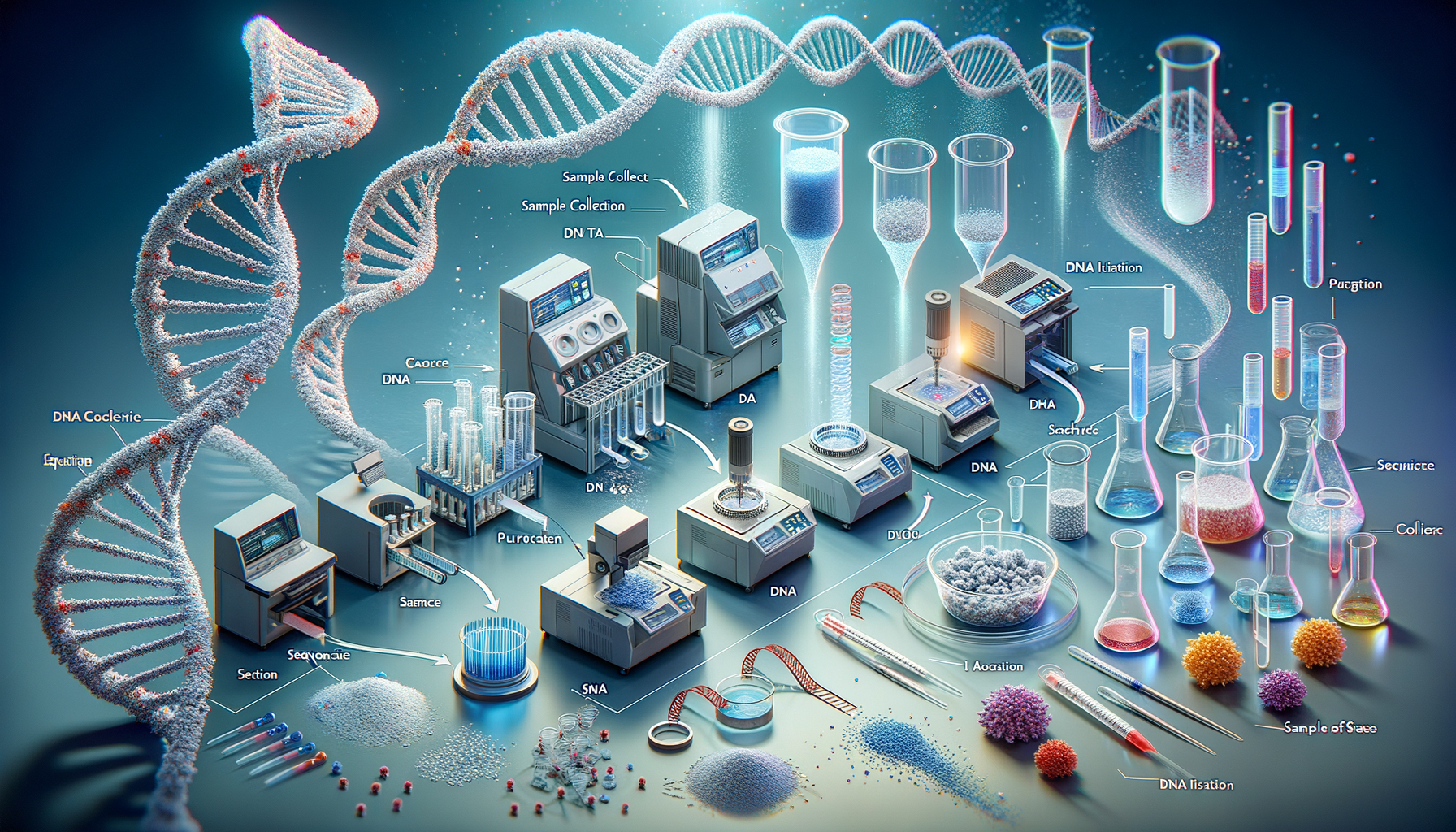Introduction to DNA Purification
DNA purification is a fundamental procedure in molecular biology, essential for various applications ranging from cloning to diagnostics. The process involves isolating DNA from cells or tissues, resulting in a pure sample ready for subsequent analysis. The accuracy and efficiency of DNA purification can significantly impact the outcomes of genetic studies, making it a critical step in research and clinical diagnostics.
Understanding the nuances of DNA purification allows scientists to tailor their methods to specific needs, whether it’s for sequencing, polymerase chain reaction (PCR), or other molecular assays. This article delves into the methods and significance of DNA purification, providing insights into how it shapes modern biological research.
Methods of DNA Purification
Several methods are employed in DNA purification, each with its unique advantages and limitations. The choice of method often depends on the source of the DNA and the intended application. Common techniques include:
- Organic Extraction: Involves the use of phenol-chloroform to separate DNA from proteins and other cellular debris. This method is known for producing high-quality DNA but requires careful handling of hazardous chemicals.
- Silica-Based Purification: Utilizes silica columns to bind DNA in the presence of high salt concentrations. It is popular for its simplicity and ability to produce pure DNA suitable for most downstream applications.
- Magnetic Bead-Based Purification: Employs magnetic beads coated with DNA-binding ligands. This method is automated and scalable, making it ideal for high-throughput applications.
Each method has its place in the laboratory, and the choice often hinges on factors such as yield, purity, and the nature of the starting material.
DNA Purification Assay: Ensuring Quality
A DNA purification assay is crucial for assessing the quality and quantity of DNA obtained from purification processes. These assays help determine the success of the purification and ensure that the DNA is suitable for intended applications.
Common assays include:
- UV Spectrophotometry: Measures DNA concentration and purity by assessing absorbance at 260 nm and 280 nm. The 260/280 ratio indicates protein contamination, with a ratio of ~1.8 considered pure for DNA.
- Fluorometric Assays: Use fluorescent dyes that specifically bind to DNA, providing a sensitive measure of concentration. These assays are particularly useful for low-concentration samples.
- Agarose Gel Electrophoresis: Visualizes DNA integrity and size distribution, ensuring that the DNA is not degraded.
These assays are integral to the purification process, providing confidence in the quality of the DNA for further experiments.
Applications of Purified DNA
Purified DNA is a cornerstone of many scientific and medical applications. Its purity and integrity are critical for the success of these applications, which include:
- Genetic Sequencing: High-quality DNA is essential for accurate sequencing results, whether for whole-genome sequencing or targeted gene analysis.
- Polymerase Chain Reaction (PCR): Purified DNA is required for amplification in PCR, a technique used in diagnostics, cloning, and research.
- Gene Cloning and Expression: Pure DNA is necessary for cloning experiments, where genes are inserted into vectors for expression in host cells.
The reliability of these applications hinges on the quality of the DNA, underscoring the importance of effective purification techniques.
Challenges and Future Directions in DNA Purification
Despite advancements, DNA purification presents several challenges. Contaminants such as proteins, RNA, and phenol can affect the quality of the DNA, impacting downstream applications. Additionally, the need for high-throughput and automated solutions is growing, particularly in clinical settings.
Future directions in DNA purification aim to address these challenges by developing more efficient, scalable, and environmentally friendly methods. Innovations such as microfluidic devices and novel binding chemistries are paving the way for more robust purification processes.
As technology evolves, the landscape of DNA purification will continue to transform, driving progress in molecular biology and personalized medicine.




Leave a Reply